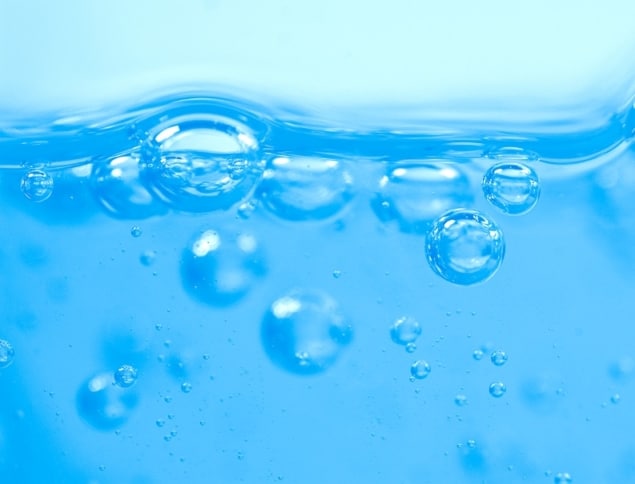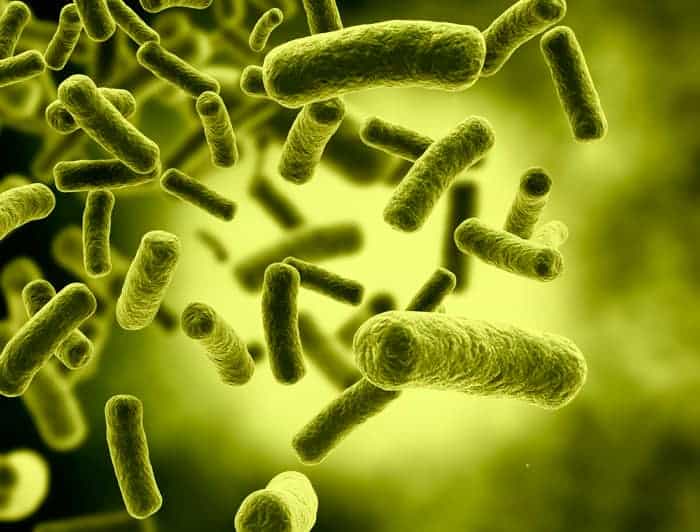
Bacteria can alter the behaviour of bubbles on the surface of contaminated water – which could maximize the airborne dispersal of the microorganisms. That is the conclusion of Lydia Bourouiba and colleagues at the Massachusetts Institute of Technology in the US, who have discovered that the bacteria do this by secreting chemicals that affect the physical process by which the of the tops of bubbles become thinner with time. This results in more droplets flying farther through the air when the droplet bursts.
Bursting bubbles can spread bacterial contamination, but little is understood about how bacteria can influence the process. Physicists do know that the thickness of the curved top of a large bubble – called the film cap – affects how droplets are spread. It is also known that before the bubble bursts, the cap thins as some of the liquid drains out of the bubble film.
This latest study began when Bourouiba’s team noticed that bubble caps in stagnant water behaved differently from caps in clean water. Bacterial contaminants were identified in the water and this motivated the team to do a controlled study of how different strains of bacteria influence bubble evolution.
Capturing bubble behaviour
The team diluted cultured bacteria with deionized water and placed the liquid in a vertical tube. Single bubbles of constant size were released at the bottom of the tube by an air pump. High speed imaging was used to capture bubble behaviour at the surface.
Bourouiba says that the team found that, “Bacteria enabled the bubbles to live much longer than relatively clean bubbles that are not biologically contaminated”. This is important because older bubbles with thinner caps produce a greater number of film droplets that are much smaller in size and fly faster and farther.
When a bubble first emerges above the surface, liquid drains from the bubble cap thereby reducing its thickness. The team found that liquid began draining from bacterially-contaminated bubble caps in much the same way as short-lived (1-10 s) clean bubbles. But after about 30 s, the bacteria-containing bubble caps thinned dramatically, making Bourouiba suspicious that they had entered different regime of thinning
Bacterial density
Using interferometry and schlieren imaging, the team confirmed the presence of bacteria in the bubble cap. They also found that the microorganisms did not appear to drain readily into the bulk as the bubbles aged.
The team looked at whether the effect was caused by the presence of bacteria, or rather by chemicals secreted by the microorganisms. The team filtered the bacteria from the liquid and repeated the experiment. They obtained comparable results and concluded that bacterial secretions are responsible for the effect.
The team then turned its attention to understanding how bacterial secretions were causing the peculiar cap thinning that occurred in the aging bubbles. They looked at whether surfactants, compounds commonly found in detergents that lower surface tension, caused similar bubble dynamics. They found that bubbles containing surfactants all had the same extended life-span and underwent a similar dramatic change in thinning after a certain time — so the group concluded that bacterial secretions contain biosurfactants.
Evaporative effect
Bouriouiba and colleagues then set out to understand why this second thinning regime occurs. In previous studies on clean water, the team had calculated the effect of evaporation on cap thinning. However, because clean bubbles are relatively short-lived, the small amount of liquid lost to evaporation can be ignored. But over the longer timescales of contaminated bubbles, evaporation is a prime candidate for thinning.
“We eliminated all of the other chemical, biological and physical hypotheses that were reasonable to consider…the last reasonable hypothesis was evaporation,” explains Bourouiba. This was confirmed by studying bubbles in air that was saturated with water vapour, where the second thinning regime was not observed.

Pushy bacteria create their own superfluids
The team’s models further verified the experimental evidence that evaporation caused the dramatic drop in bubble cap thickness observed in both bacterially contaminated water and surfactants.
One puzzling aspect of the study is that some types of bacteria used by the team do not have biofilm-forming or waterborne stages in their life-cycles, yet these microorganisms still caused bubble-thinning effects. This could mean that a common waste product of bacteria could be causing the effect.
“The work has critical implications in terms of understanding organism dispersal,” said Bourouiba, who is excited by how her physics-based approach has illuminated complex biology. “Our next steps will focus on various aspects, including the physics of dispersal, but also the evolutionary aspect and ecological applications of these processes.”
The research is described in Physical Review Letters.



